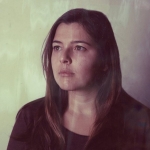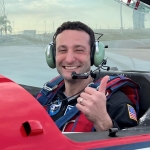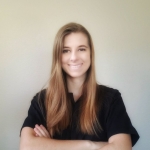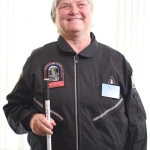Inclusion I
Space Analog for the Moon and Mars (SAM) at Biosphere 2
April 27 – May 2, 2023
Mission Objectives:
Inclusion – Provide selected individuals an opportunity to perform scientific research in a diverse, inclusive simulation mission, without the frequent barriers of discrimination, cost, or accessibility.
Accessibility – Facilitate the integration of persons with a disability in analog/simulations of the Moon or Mars, while actively working to improve accessibility and inform future accessible designs.
Scientific Research – Perform rigorous scientific research during the missions and disseminate the results to the appropriate audience, academic journals, and institutions. This research will be applicable to future space habitat design, astronaut well-being, and human spaceflight in general.
Promote Diversity in STEM / Spaceflight – Demonstrate the unique skills and adaptations that a diverse, mixed ability crew can contribute to human spaceflight.
Mission Summary: A collection of photo essays that capture the training, ingress, CapCom and crew communications, EVAs, and egress.
Inclusion I – Members
 Cassandra Klos, Commander and Crew Photographer, is a fine art photographer, curator, and analog astronaut. She grew up in New Hampshire where, in her youth, she watched many science fiction movies and viewed galaxies through her backyard telescope. She holds her Bachelor of Fine Arts from the School of the Museum of Fine Arts, Boston and her Masters of Fine Arts from Duke University. Her artwork focuses on deciphering the truth from fiction, through the mediums of photography, audio, and installation. She has served on two simulated missions at the Mars Desert Research Station in Hanksville, Utah and one at the Hawai’i Space Exploration Analog and Simulation on the Big Island. For almost a decade, Cassandra has bridged photography with her simulated missions and surrounding technology and invention. With space suits, freeze-dried food, and Mission Control waiting back “home,” the photographs attempt to visualize what space travel might be like for the first space explorers. The project is ongoing as technology and simulated training changes. Cassandra currently resides in Boston, Massachusetts with her husband and pup.
Cassandra Klos, Commander and Crew Photographer, is a fine art photographer, curator, and analog astronaut. She grew up in New Hampshire where, in her youth, she watched many science fiction movies and viewed galaxies through her backyard telescope. She holds her Bachelor of Fine Arts from the School of the Museum of Fine Arts, Boston and her Masters of Fine Arts from Duke University. Her artwork focuses on deciphering the truth from fiction, through the mediums of photography, audio, and installation. She has served on two simulated missions at the Mars Desert Research Station in Hanksville, Utah and one at the Hawai’i Space Exploration Analog and Simulation on the Big Island. For almost a decade, Cassandra has bridged photography with her simulated missions and surrounding technology and invention. With space suits, freeze-dried food, and Mission Control waiting back “home,” the photographs attempt to visualize what space travel might be like for the first space explorers. The project is ongoing as technology and simulated training changes. Cassandra currently resides in Boston, Massachusetts with her husband and pup.
 Eiman Jahangir, Medical officer, MD MPH is a Cardiologist, scuba diver, space enthusiast, and two-time NASA Astronaut Candidate finalist (2009 and 2013). Eiman believes space pushes humans to their limits both physically and at times, emotionally. The challenges of space flight along with the overview effect can lead to profound change in a person. His personal focus on space research is to form protocols and training needed to send all people safely to space and back. He has training in life support systems, space physiology, high-G, crew resource management, spacesuits, high-altitudes, and biometric analysis. As a board-certified Cardiologist, he actively treats conditions such as autonomic disorder, hypertension, dizziness, and syncope; all conditions that can affect astronauts. Eiman holds a Bachelor of Arts in Religious Studies from George Washington University (Washington, DC), a medical degree from the, University of Tennessee (Memphis, TN), and a Master of Public Health from Vanderbilt University (Nashville, TN). He is an Associate Professor at Vanderbilt University Medical Center with more than 40 manuscripts in peer-reviewed journals and book chapters.
Eiman Jahangir, Medical officer, MD MPH is a Cardiologist, scuba diver, space enthusiast, and two-time NASA Astronaut Candidate finalist (2009 and 2013). Eiman believes space pushes humans to their limits both physically and at times, emotionally. The challenges of space flight along with the overview effect can lead to profound change in a person. His personal focus on space research is to form protocols and training needed to send all people safely to space and back. He has training in life support systems, space physiology, high-G, crew resource management, spacesuits, high-altitudes, and biometric analysis. As a board-certified Cardiologist, he actively treats conditions such as autonomic disorder, hypertension, dizziness, and syncope; all conditions that can affect astronauts. Eiman holds a Bachelor of Arts in Religious Studies from George Washington University (Washington, DC), a medical degree from the, University of Tennessee (Memphis, TN), and a Master of Public Health from Vanderbilt University (Nashville, TN). He is an Associate Professor at Vanderbilt University Medical Center with more than 40 manuscripts in peer-reviewed journals and book chapters.
 Bailey Burns, Engineer, is an Aerospace Systems Engineer with Blue Origin, focusing on Environmental Control and Life Support Systems (ECLSS), lunar dust mitigation, and lunar operations. Her work is primarily based around the Moon but she has experience in spacesuits and softgoods, high altitude activity, and space tourism. Burns has her M.S. in Space Resources with an emphasis in lunar regolith and dust mitigation. This will be Burns’ second analog mission with her first being at HI-SEAS in 2020 on Selene-I where she served as a crew engineer and a crew journalist. This mission focused on studying lava tubes partnered with NASA Goddard. She has dedicated more time to emotional intelligence and crew dynamics based on this mission. Burns has also received preliminary training in hypoxia, g-force, zero gravity, is open-water scuba certified, and participated in the initial Center for Human Space Exploration (CHaSE) program.
Bailey Burns, Engineer, is an Aerospace Systems Engineer with Blue Origin, focusing on Environmental Control and Life Support Systems (ECLSS), lunar dust mitigation, and lunar operations. Her work is primarily based around the Moon but she has experience in spacesuits and softgoods, high altitude activity, and space tourism. Burns has her M.S. in Space Resources with an emphasis in lunar regolith and dust mitigation. This will be Burns’ second analog mission with her first being at HI-SEAS in 2020 on Selene-I where she served as a crew engineer and a crew journalist. This mission focused on studying lava tubes partnered with NASA Goddard. She has dedicated more time to emotional intelligence and crew dynamics based on this mission. Burns has also received preliminary training in hypoxia, g-force, zero gravity, is open-water scuba certified, and participated in the initial Center for Human Space Exploration (CHaSE) program.
 Dr. Sheri Wells-Jensen, Communications officer, Accessibility officer, is a linguist who teaches in the Linguistics/TESOL program at Bowling Green State University, Ohio. Her research interests include linguistic components of extraterrestrial message construction, social aspects of human space colonization, disability studies, the relationship between language, embodiment, and thought, and the ways in which alternative sensory inputs could influence the evolution of scientific advancement and cognition in potential extra-terrestrial intelligence. As a 2021 and 2022 AstroAccess ambassador Sheri flew aboard Zero G Corporation’s parabolic flights, supported micro gravity investigations into making outer space accessible to future disabled Astronauts, and is likely the only human ever to play an Irish penny whistle and write in braille while floating in zero G. Closer to home, she is the 2023 Baruch S. Blumberg NASA/Library of Congress chair Astrobiology, Exploration, and Scientific Innovation and is working on a book about disability and space. She was delighted to serve as linguistic consultant for the third season of Star Trek Discovery. Sheri’s favorite pastimes are playing with the BG local band the Grande Royale Ukulelists of the Black Swamp and tending her 1200-day Duo Lingo language learning streak.
Dr. Sheri Wells-Jensen, Communications officer, Accessibility officer, is a linguist who teaches in the Linguistics/TESOL program at Bowling Green State University, Ohio. Her research interests include linguistic components of extraterrestrial message construction, social aspects of human space colonization, disability studies, the relationship between language, embodiment, and thought, and the ways in which alternative sensory inputs could influence the evolution of scientific advancement and cognition in potential extra-terrestrial intelligence. As a 2021 and 2022 AstroAccess ambassador Sheri flew aboard Zero G Corporation’s parabolic flights, supported micro gravity investigations into making outer space accessible to future disabled Astronauts, and is likely the only human ever to play an Irish penny whistle and write in braille while floating in zero G. Closer to home, she is the 2023 Baruch S. Blumberg NASA/Library of Congress chair Astrobiology, Exploration, and Scientific Innovation and is working on a book about disability and space. She was delighted to serve as linguistic consultant for the third season of Star Trek Discovery. Sheri’s favorite pastimes are playing with the BG local band the Grande Royale Ukulelists of the Black Swamp and tending her 1200-day Duo Lingo language learning streak.
Flight Team
Flight Director/ Mission Director: Dr. Brandy Nunez
Flight Control Team/Mission Control: Brenda Trinidad
Mission Operations: Trent Adams
Mission Support: Eric Shear
Science Director: Dr. Adriana Blachowicz
Inclusion/Accessibility Director: Dr. Sheri Wells-Jensen

